LampizatOr Pacific DAC turned out to be a stupendous performer, it dethroned my Golden Gate reference machine swiftly. The writing about these two was rather lengthy one, the job’s not fully done yet. Vacuum tubes are what’s left and that’s a big subject on its own. Since my Pacific loaner arrived with a box full of KR Audio glass, it’s high time to tackle this matter exclusively. Enjoy!
Introduction
It’s highly likely, though I’m not in 100% sure whether Łukasz Fikus commercialized directly heated triodes in D/A converters. Even if this is not factual, he’s been spreading the word about DHTs in digital devices for years now. This specific breed of valves is considered as noisy, hence difficult to implement, though LampizatOr’s CEO thus far gave us enough reasons to think that he nailed this tech. Not only his machines look very much hot rodded with their directly heated glass protruding significantly, but also allow extensive sound modifications via tube rolling. That’s one of major reasons why enthusiasts enjoy so much what Łukasz is the most known for. The sheer number of DHT glass related tweaking options is truly generous. There are dozens of tubes which will easily work in upper echelon LampizatOr products with no questions asked. Vintage and heavily used, NOS (aka. New old Stock) or current production… it doesn’t matter. These machines are very flexible in this regard. And ringing DHTs are prone to? Several years back I could clap anywhere near my Level7’s output stage and the whole room filled with this particular itchy sound, yet those days are no more. This two boxed model was the last one which actually had such an issue, on the contrary to everything that came next and is known to me.
The sheer number of DHT glass related tweaking options is truly generous. There are dozens of tubes which will easily work in upper echelon LampizatOr products with no questions asked. Vintage and heavily used, NOS (aka. New old Stock) or current production… it doesn’t matter. These machines are very flexible in this regard. And ringing DHTs are prone to? Several years back I could clap anywhere near my Level7’s output stage and the whole room filled with this particular itchy sound, yet those days are no more. This two boxed model was the last one which actually had such an issue, on the contrary to everything that came next and is known to me.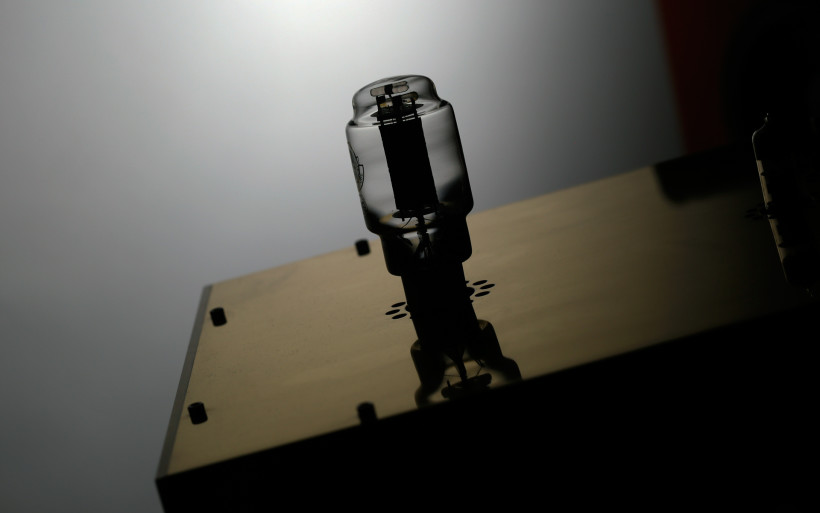 Each tube described down below was on the on and off duty dozens of times. Hundreds of swaps had to be and were done and the conclusion is as follows: it’s surprising how much these items can withstand. Each and every one survived my journalistic torture, works like a charm still and the DAC itself did this task like it was nothing. Even though the manufacturer doesn’t recommend to, one can hot swap both output tubes and a rectifier without turning a DAC off. Preamplifier’s input switch or volume completely muted will do the trick. Point being, the rolling process itself in Pacific became completely painless and stress-free not only for this product, but every other in the chain as well. And also easier, quicker and safer over the years. True, it never was complicated, but the word is that valves are in general fragile. Are they really?
Each tube described down below was on the on and off duty dozens of times. Hundreds of swaps had to be and were done and the conclusion is as follows: it’s surprising how much these items can withstand. Each and every one survived my journalistic torture, works like a charm still and the DAC itself did this task like it was nothing. Even though the manufacturer doesn’t recommend to, one can hot swap both output tubes and a rectifier without turning a DAC off. Preamplifier’s input switch or volume completely muted will do the trick. Point being, the rolling process itself in Pacific became completely painless and stress-free not only for this product, but every other in the chain as well. And also easier, quicker and safer over the years. True, it never was complicated, but the word is that valves are in general fragile. Are they really?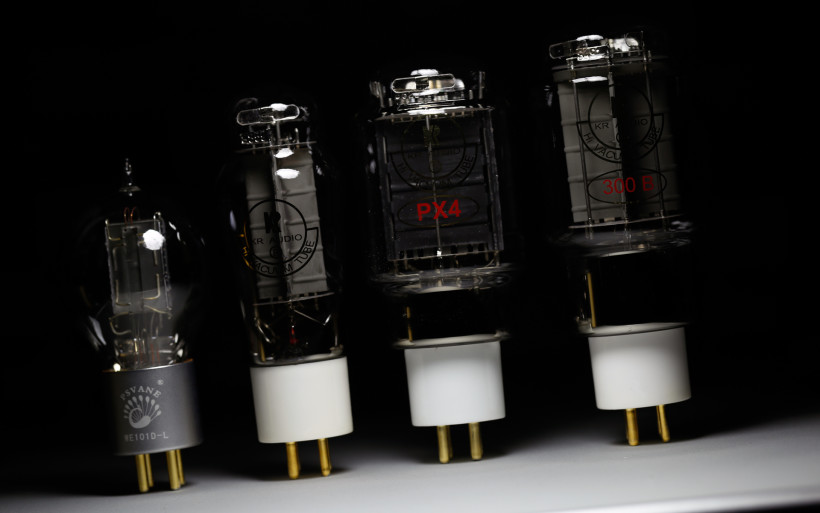 Yes, glass breaks easily once dropped on a concrete floor. But this obvious thing aside, not a single issue I had during the reviewing process. This part of the story is probably nothing new to vets knees deep into tubes rollin’. But to newcomers fond of LampizatOr DACs, yet still hesitant/afraid to exploit said functionality in these machines I can only say this: don’t be, you won’t toast or break anything. And it’s a lot of fun, not necessarily costly in the context of price tags of D/A converters made by Łukasz and his crew.
Yes, glass breaks easily once dropped on a concrete floor. But this obvious thing aside, not a single issue I had during the reviewing process. This part of the story is probably nothing new to vets knees deep into tubes rollin’. But to newcomers fond of LampizatOr DACs, yet still hesitant/afraid to exploit said functionality in these machines I can only say this: don’t be, you won’t toast or break anything. And it’s a lot of fun, not necessarily costly in the context of price tags of D/A converters made by Łukasz and his crew.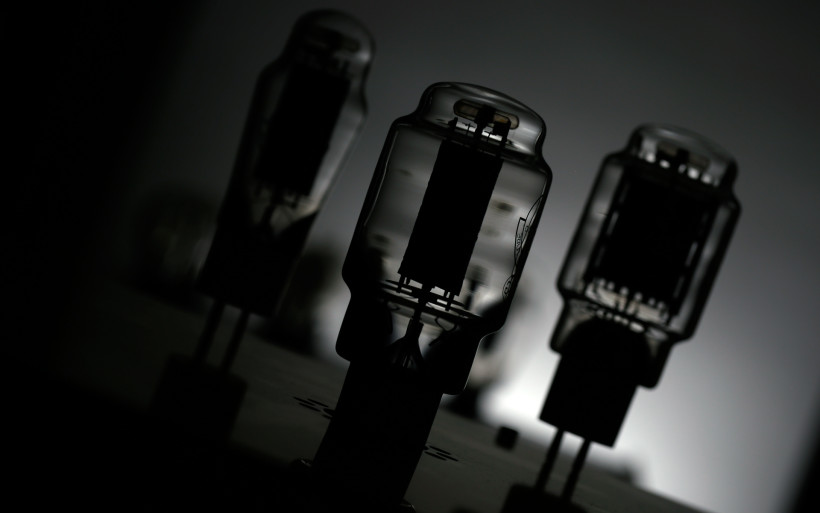 Moving on, LampizatOr Pacific arrived with three versions of 5U4G rectifiers; square-shaped one, my 2016 limited edition daily driver and the last one is the 2017 version of the former. Its base is made out of different material, though other than that it looks very similar if not the same. Rectifiers are the starter, whereas several different DHT types are the main dish; 300B, PX4, 4A3 and T-100. All tubes listed thus far are made by KR Audio, but my trusty Psvane WE101D-L had part in the show as well. Here’s the story.
Moving on, LampizatOr Pacific arrived with three versions of 5U4G rectifiers; square-shaped one, my 2016 limited edition daily driver and the last one is the 2017 version of the former. Its base is made out of different material, though other than that it looks very similar if not the same. Rectifiers are the starter, whereas several different DHT types are the main dish; 300B, PX4, 4A3 and T-100. All tubes listed thus far are made by KR Audio, but my trusty Psvane WE101D-L had part in the show as well. Here’s the story.
Rectifiers
Rectifiers were the first order of business. The starting point was my trusty ‘ol 5U4G 2016 version limited to 50 units. The initial expectations were quite low, all three products were of the same type after all. Hence the assumption was that delta of changes between them should be very slight if audible at all. Here it’s worth knowing that my 5U4G glass – dare I conservatively say – has 1500+ hours on it. And both newcomers were on duty for far lesser time, each worked for ~150 hours tops. Differences between ’em were mild as expected, true, yet audible quite clearly nonetheless.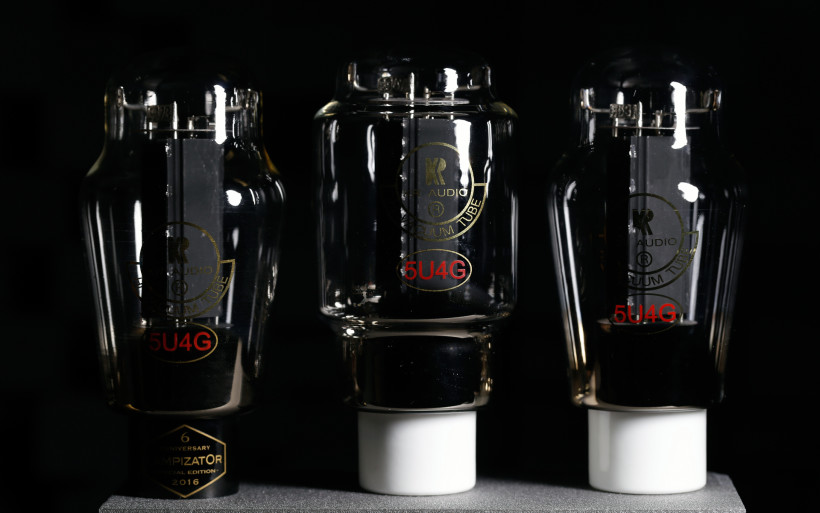 The 2016 version of 5U4G was cherry-picked because it packed punch not found in any other rectifier I’ve tried thus far, that’s one thing. And it’s a very smooth sounding tube, with great extension down below, precision, control and definition all across the board. As a perfect all-rounder, this one was the very safe benchmark. Much bigger and visually somewhat intimidating square-shaped 5U4G arrived next. It quickly turned out that this newcomer sang in leaner and more direct fashion, a bit nervous even. It remains a mystery whether additional hours at work would change such feverish attitude. This glass also was more precise in the mid FR, somewhat more expansive and grander as far as imaging goes and a bit less smooth, though it did the job nicely in this regard. To put it in more understandable context, my rectifier from 2016 was somewhat similar to Golden Gate, whereas the square alike valve had more things in common with Pacific DAC. Objectively these tubes delivered different experience sound wise and both I consider as high quality performers in general, this goes without saying. Yet the one from 2016 subjectively was found to be a bit more refined and civilized still, hence subjectively a bit better.
The 2016 version of 5U4G was cherry-picked because it packed punch not found in any other rectifier I’ve tried thus far, that’s one thing. And it’s a very smooth sounding tube, with great extension down below, precision, control and definition all across the board. As a perfect all-rounder, this one was the very safe benchmark. Much bigger and visually somewhat intimidating square-shaped 5U4G arrived next. It quickly turned out that this newcomer sang in leaner and more direct fashion, a bit nervous even. It remains a mystery whether additional hours at work would change such feverish attitude. This glass also was more precise in the mid FR, somewhat more expansive and grander as far as imaging goes and a bit less smooth, though it did the job nicely in this regard. To put it in more understandable context, my rectifier from 2016 was somewhat similar to Golden Gate, whereas the square alike valve had more things in common with Pacific DAC. Objectively these tubes delivered different experience sound wise and both I consider as high quality performers in general, this goes without saying. Yet the one from 2016 subjectively was found to be a bit more refined and civilized still, hence subjectively a bit better.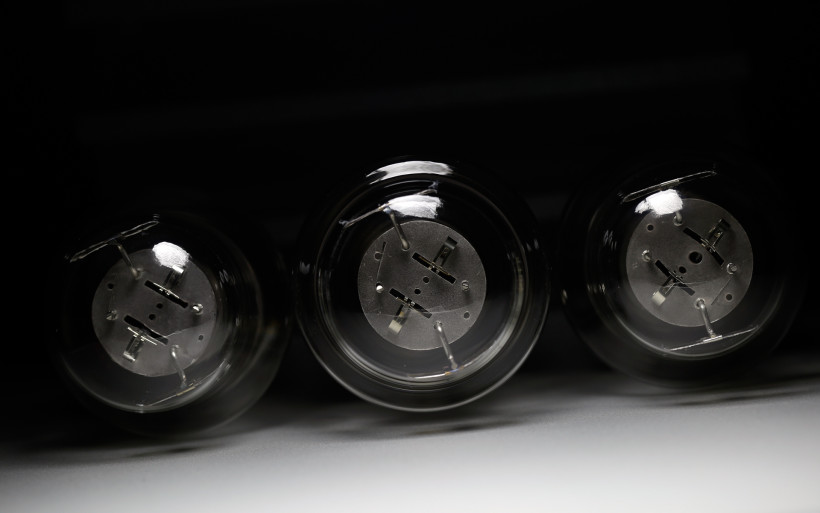 Regular 5U4G was next in line. It quickly turned out that this one was swiftly able to merge the best of both worlds. Density and texturing taken from the 5U4G from 2016 and square-shaped model’s clarity and attitude netted such an outcome. It was damn impressive one, even though differences between all three rectifiers were of no night and day but far smaller. The regular 5U4G had it all to my very ears, it covered every field with no trade-offs whatsoever. Let me state the obvious thing here: agility, clarity and grandness of square-shaped rectifier combined with density, smoothness and refinement of the 5U4G glass from 2016 I gladly took from this point onward (during DHTs evaluation that is) with no questions asked. It’s the most balanced one out of all three and a damn good one. And lastly, if I had to put all contestants on the Olympic pedestal and award ’em accordingly, the white base loaded 5U4G would get gold, whereas my daily driver from 2016 and the biggest rectifier would stand in there with silver and bronze medals respectively. Case closed, let’s move to DHTs.
Regular 5U4G was next in line. It quickly turned out that this one was swiftly able to merge the best of both worlds. Density and texturing taken from the 5U4G from 2016 and square-shaped model’s clarity and attitude netted such an outcome. It was damn impressive one, even though differences between all three rectifiers were of no night and day but far smaller. The regular 5U4G had it all to my very ears, it covered every field with no trade-offs whatsoever. Let me state the obvious thing here: agility, clarity and grandness of square-shaped rectifier combined with density, smoothness and refinement of the 5U4G glass from 2016 I gladly took from this point onward (during DHTs evaluation that is) with no questions asked. It’s the most balanced one out of all three and a damn good one. And lastly, if I had to put all contestants on the Olympic pedestal and award ’em accordingly, the white base loaded 5U4G would get gold, whereas my daily driver from 2016 and the biggest rectifier would stand in there with silver and bronze medals respectively. Case closed, let’s move to DHTs.
The evaluation process
Before we’ll go deeper into the most important part of this writing, several words are in order. We’ve already covered what rectifier was used to evaluate all DHTs. Moving on, my Boenicke W8 reference speakers were at works and so was Trilogy 925 integrated amp. The only difference was a DAC. Here Pacific was on duty exclusively. Why not Golden Gate too? In short, time was precious. I’d gladly torture every glass in every configuration and with both DACs to cover this field as extensively as possible, but this scenario was off the table. Once my Pacific review went online, the machine itself had to be returned within days, not weeks. It’s also of no surprise that similar story was with loaned tubes. The obvious follow-up to this is that I simply had to hurry. The main goal of this exercise was to grasp each tube’s unique character and its impact on Pacific. Some aspects didn’t flesh out as clearly as they should, hence the description down below might not be sufficiently thorough for some individuals, which is understandable. But now at least it’s known why.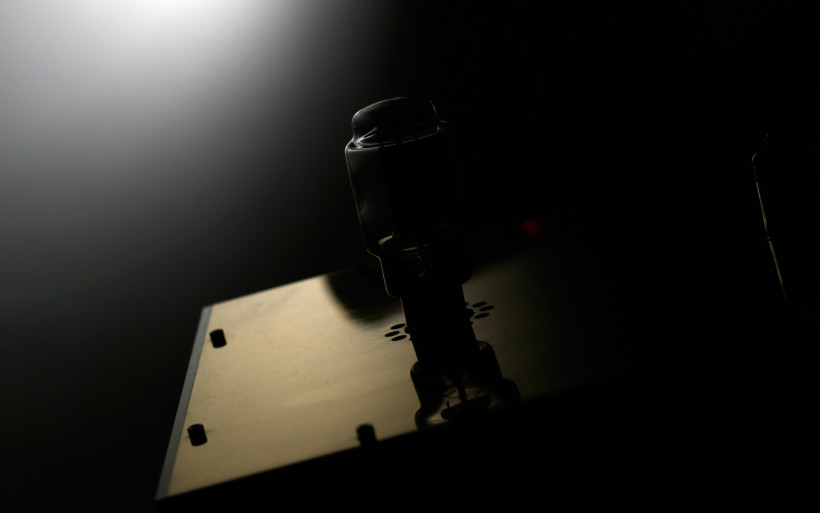 In order to fulfill the DHTs related task, the first order of business was to establish to which glass every other tube should be compared to. Here the obvious choice would be a pair of WE101D-Ls used daily, yet that didn’t happen on purpose. Shortly past Pacific’s arrival, each tube was listened briefly, just to satisfy my inner curiosity. Some early conclusions were the outcome and shortly after it became very obvious that I should go with KR Audio 300B instead. Here it’s important to know that Łukasz sells Pacific with these as a standard option.
In order to fulfill the DHTs related task, the first order of business was to establish to which glass every other tube should be compared to. Here the obvious choice would be a pair of WE101D-Ls used daily, yet that didn’t happen on purpose. Shortly past Pacific’s arrival, each tube was listened briefly, just to satisfy my inner curiosity. Some early conclusions were the outcome and shortly after it became very obvious that I should go with KR Audio 300B instead. Here it’s important to know that Łukasz sells Pacific with these as a standard option. Once every tube had its fair chance, it became crystal clear why the 300B and not any other model. When Pacific is fed with this one in particular, it’s shown very clearly what this DAC is all about. No other glass I had on hand back then is able to replicate this sensation to such a degree. This tube emphasizes and boosts Polish newcomer’s character in a brilliant way, extensive synergy is present and the 300B sounds very unique in comparison to every other valve tried at that time. And that’s why to not stick to this special glass would be criminal.
Once every tube had its fair chance, it became crystal clear why the 300B and not any other model. When Pacific is fed with this one in particular, it’s shown very clearly what this DAC is all about. No other glass I had on hand back then is able to replicate this sensation to such a degree. This tube emphasizes and boosts Polish newcomer’s character in a brilliant way, extensive synergy is present and the 300B sounds very unique in comparison to every other valve tried at that time. And that’s why to not stick to this special glass would be criminal.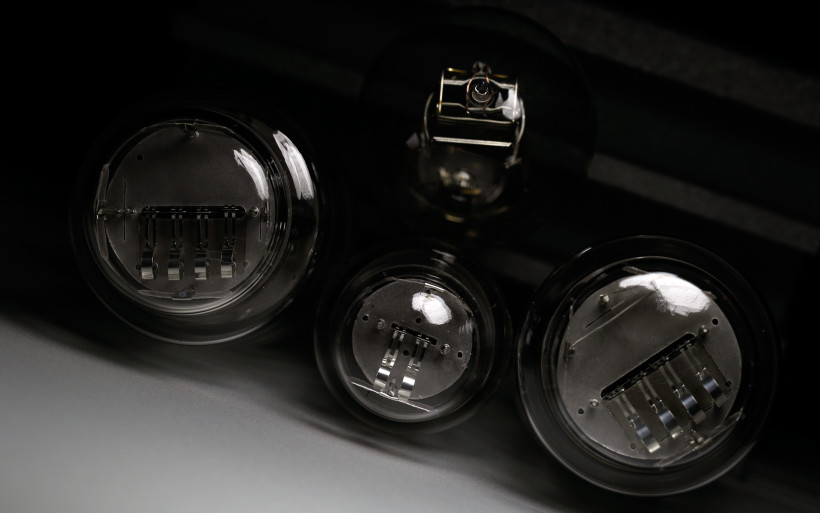 Once the DHT benchmark matter was resolved, each tube was auditioned for several hours, short individual brawls with KR Audio 300B was on and a bit of easygoing mix’n’match happened afterwards. Once all this was done, it was high time to return everything to Łukasz and start writing key chapters of this story.
Once the DHT benchmark matter was resolved, each tube was auditioned for several hours, short individual brawls with KR Audio 300B was on and a bit of easygoing mix’n’match happened afterwards. Once all this was done, it was high time to return everything to Łukasz and start writing key chapters of this story.
KR Audio 300B versus Psvane WE101D-L
Psvane WE101D-L was the first one in line. This model is very good in general; it does many things right and nothing wrong. Still, after several swaps it was quite clear that the reference 300B is not only different on many levels, but also better. The KR Audio product is leaner yet more agile and punchy. This should already give many people something to think about. Wait, isn’t this the major difference between Golden Gate and Pacific? Indeed and something very similar happened in the glassy realm. WE101D-L is more blossomy in general, its upper bass region is emphasized in comparison to the 300B, whereas the latter is faster, holds the whole downstairs department in even tighter grip and reaches lower. The outcome is that KR Audio 300B defines bass better and shows more expressively what it really is from one track to another. The differentiation potential of this tube is simply greater. Moving upper in the audible FR, WE101D-L is blurrier, more diluted and less focused as far as midrange presentation goes.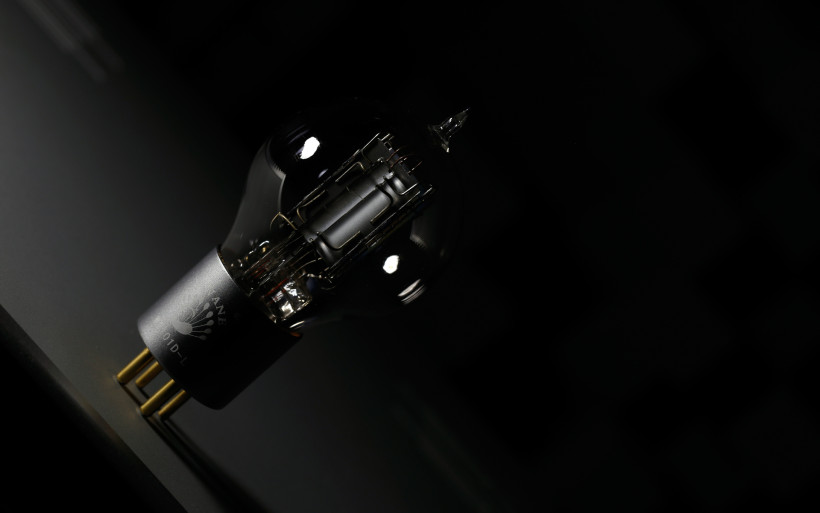 Thus far I was certain that the Psvane product does a very nice job with highs. True that, yet here it’s beaten by the 300B again. The former tube is less delicate, a bit metallic, shinier and with shorter decay. It is great nonetheless, yet the KR Audio reference is on another level here, to my ears at least. Another aspect that divides both products is the soundstage. 300B paints wider and airier picture, which honestly wasn’t expected at all. Pacific sounds very expansive and grand in general and this tube boosts this attitude even more, which leads to stupendous outcome on a quite regular basis. It can be easily said that thicker, less articulate, less refined and less airy WE101D-L sounds very differently in comparison to slimmer, punchier, more resolving and immediate KR Audio 300B. Because of obvious supremacy of the latter on too many levels, this skirmish doesn’t quite fit in the apples vs oranges story. Still, the Psvane product undoubtedly is a great performer for the price. That’s a given.
Thus far I was certain that the Psvane product does a very nice job with highs. True that, yet here it’s beaten by the 300B again. The former tube is less delicate, a bit metallic, shinier and with shorter decay. It is great nonetheless, yet the KR Audio reference is on another level here, to my ears at least. Another aspect that divides both products is the soundstage. 300B paints wider and airier picture, which honestly wasn’t expected at all. Pacific sounds very expansive and grand in general and this tube boosts this attitude even more, which leads to stupendous outcome on a quite regular basis. It can be easily said that thicker, less articulate, less refined and less airy WE101D-L sounds very differently in comparison to slimmer, punchier, more resolving and immediate KR Audio 300B. Because of obvious supremacy of the latter on too many levels, this skirmish doesn’t quite fit in the apples vs oranges story. Still, the Psvane product undoubtedly is a great performer for the price. That’s a given.
KR Audio 300B versus KR Audio 4A3
In this battle, the history repeated itself in a way described one chapter above. The 4A3 model turned out to be audibly slower not only in comparison to the 300B, but also to my daily driver by Psvane. It’s said that usually the 300B family is considered as the easygoing and laid back one in comparison to other DHTs, but in LampizatOr DACs that’s not always the case. Somewhat similar story happened years back when a pair of Shuguang Golden Treasure 300B-Z was sent to this scribe. Many people praised this glass for its midrange oriented charm, whereas in my Level7 said tube turned out to be a true bass daemon. Go figure.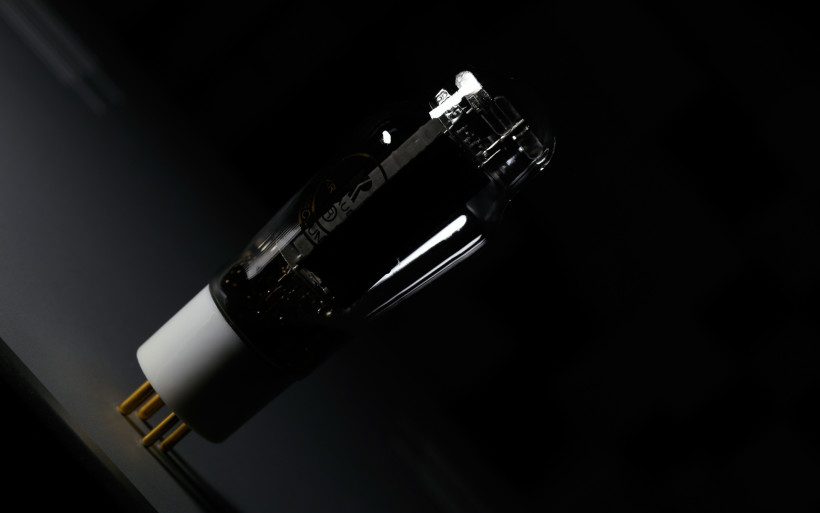 In any case, 4A3 was not only slower in comparison to the 300B, but also dimmed up top and that was quite audible in my setup. And the rest? Well, the latter tube was feistier, more resolving and immediate, airier and imaging wise far bigger. It also sketched things between speakers differently. Vocals had always more space around them hence were ‘visible’ more clearly, even despite of positioning them a bit deeper in the soundstage. One could argue here that in this regard the 4A3 had an edge over 300B, though subjectively speaking I like to have a picture in front of me lively and organic, but also clear and precise. And clarity is KR Audio 300B’s middle name, this tube is in general does the accurate and informational job amazingly well. Long story’s short, the outcome of this fight was very conclusive, KR Audio 4A3 positioned itself somewhere behind WE101D-L.
In any case, 4A3 was not only slower in comparison to the 300B, but also dimmed up top and that was quite audible in my setup. And the rest? Well, the latter tube was feistier, more resolving and immediate, airier and imaging wise far bigger. It also sketched things between speakers differently. Vocals had always more space around them hence were ‘visible’ more clearly, even despite of positioning them a bit deeper in the soundstage. One could argue here that in this regard the 4A3 had an edge over 300B, though subjectively speaking I like to have a picture in front of me lively and organic, but also clear and precise. And clarity is KR Audio 300B’s middle name, this tube is in general does the accurate and informational job amazingly well. Long story’s short, the outcome of this fight was very conclusive, KR Audio 4A3 positioned itself somewhere behind WE101D-L.
KR Audio 300B versus KR Audio PX4
KR Audio PX4 looks similar to the 300B by the same manufacturer, yet sounds nothing like it. This is a great performer. Yes, it’s slower than the former, not as clear and – past the two descriptions up above – it might seem that this very chapter will follow in somewhat similar vein. That’s not the case this time around, simply because the PX4 was able to keep up with the 300B on many levels and executed its own sound scheme with class. First of all, when the former was on, the sensation of everything in check was there, even if the 300B was used mere minutes earlier. This hasn’t happened neither with WE101D-L nor 4A3, there was something missing in both of these. Such an outcome was a clear indication for me that the PX4 played in a different league.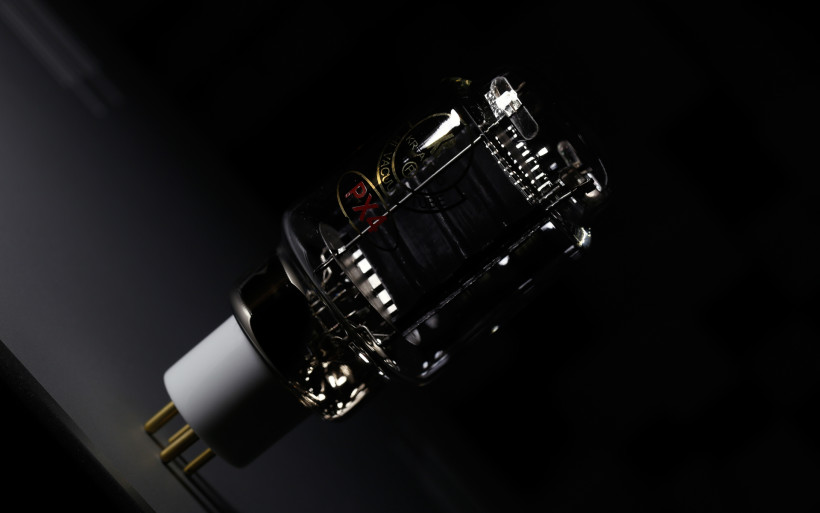 KR Audio PX4 gets the density job done very nicely and it sounds organic and refined, even despite of being slower and less precise than 300B. This valve makes vocals a bit bigger than they are. It also slightly shortens distance between ’em and a listener. Maybe here the subjective part of me speaks more freely than it should, perhaps my emotional attachment to the very first row served up close and personal won with cool headed journalistic voice of reason, I can’t say. But to my ears fatter, slightly toned down and vocals wise more intimate the PX4 pulls off the imaging trick very nicely still. This tube also sports fine top end, even despite of its lesser presence and obviousness in comparison to what the 300B delivers here. All in all, the PX4 is a great glass to have. In my ranking it’s not on par with the reference product, though was able to position itself not too far behind it and ahead of WE101D-L easily. The initial agenda was that this report should’ve ended in this place. And then, all of a sudden, a major twist happened. Łukasz called in the nick of time, delivered one additional pair of tubes and… that changed everything.
KR Audio PX4 gets the density job done very nicely and it sounds organic and refined, even despite of being slower and less precise than 300B. This valve makes vocals a bit bigger than they are. It also slightly shortens distance between ’em and a listener. Maybe here the subjective part of me speaks more freely than it should, perhaps my emotional attachment to the very first row served up close and personal won with cool headed journalistic voice of reason, I can’t say. But to my ears fatter, slightly toned down and vocals wise more intimate the PX4 pulls off the imaging trick very nicely still. This tube also sports fine top end, even despite of its lesser presence and obviousness in comparison to what the 300B delivers here. All in all, the PX4 is a great glass to have. In my ranking it’s not on par with the reference product, though was able to position itself not too far behind it and ahead of WE101D-L easily. The initial agenda was that this report should’ve ended in this place. And then, all of a sudden, a major twist happened. Łukasz called in the nick of time, delivered one additional pair of tubes and… that changed everything.
KR Audio 300B versus KR Audio T-100
To say that KR Audio T-100 is a huge monster of a tube is not over the top at all. Please take a look at the pictures. What’s even more impressive is the sound this one delivers. Shortly before this product’s arrival, yours truly was certain of two things; that KR Audio 300B won the battle royale with a bang and that this status quo will remain unchanged. This tube really impressed me and the more opponents it defeated, the more appreciation was given in return. Each and every time it was a pure joy to get back to KR Audio 300B, regardless of what Pacific was fed with beforehand. Case closed, then? No, not at all. Thus far, the current king of the hill was recognized as exceptionally fast. In this regard in particular it will be very difficult to beat, that I’m sure of. T-100 doesn’t compete with 300B here, at least not in the usual way. It has its own things going on, other aspects are emphasized more than speed. The former tube is more muscular, that’s heard in an instant. We’ve been there already, right? Every other glass did this exactly, so where’s the difference then? Well, in the sensation of musical substance, the so-called presence. T-100 sports bigger bass and at the same time also has not bloated, fuzzy or excessively round character, but loads of organic, vivid tissue and is exceptionally fast on top of that.
Thus far, the current king of the hill was recognized as exceptionally fast. In this regard in particular it will be very difficult to beat, that I’m sure of. T-100 doesn’t compete with 300B here, at least not in the usual way. It has its own things going on, other aspects are emphasized more than speed. The former tube is more muscular, that’s heard in an instant. We’ve been there already, right? Every other glass did this exactly, so where’s the difference then? Well, in the sensation of musical substance, the so-called presence. T-100 sports bigger bass and at the same time also has not bloated, fuzzy or excessively round character, but loads of organic, vivid tissue and is exceptionally fast on top of that.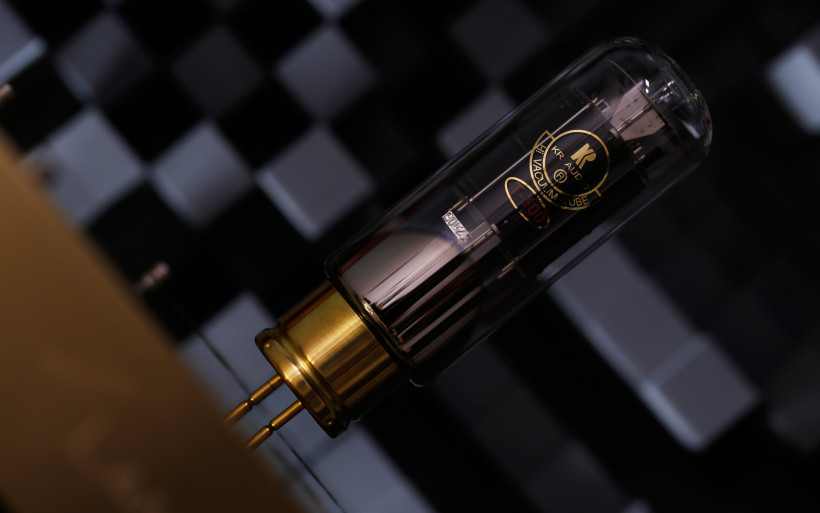 At first it’s not that obvious. With upper bass region not elevated in any meaningful way and airier in general, the 300B has far easier job in showcasing its dynamic potential. This tube puts the crack and shove on the pedestal and once all this is combined, the sheer speed factor is boosted by quite a bit. T-100’s downstairs department is more evenly displayed, one gets the full care package; not only very dynamic bass response and very deep extension, but also pleasant fatty tissue above. In case of this tube, speed and control keeps all this in check, which is remarkable. To make this picture even more complete, let’s invoke the Trilogy analogy again. KR Audio 300B is the 993 + 903 combo, whereas T-100 is the 925 integrated on steroids, way faster than usually. In a way, this glass sings similarly to my Golden Gate, yet is altered with horsepower from Pacific directly.
At first it’s not that obvious. With upper bass region not elevated in any meaningful way and airier in general, the 300B has far easier job in showcasing its dynamic potential. This tube puts the crack and shove on the pedestal and once all this is combined, the sheer speed factor is boosted by quite a bit. T-100’s downstairs department is more evenly displayed, one gets the full care package; not only very dynamic bass response and very deep extension, but also pleasant fatty tissue above. In case of this tube, speed and control keeps all this in check, which is remarkable. To make this picture even more complete, let’s invoke the Trilogy analogy again. KR Audio 300B is the 993 + 903 combo, whereas T-100 is the 925 integrated on steroids, way faster than usually. In a way, this glass sings similarly to my Golden Gate, yet is altered with horsepower from Pacific directly.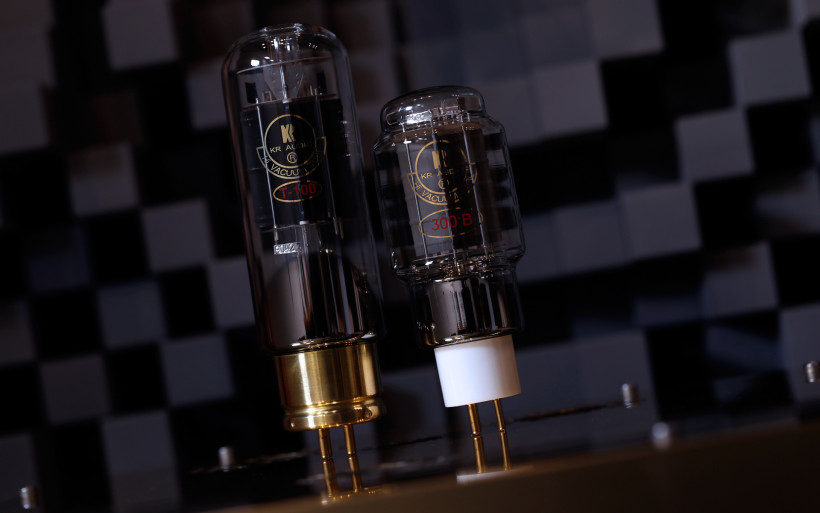 Moving on, T-100 is the meatier one, even in the upper audible FR. With this valve on-board, i.e. percussion plates’ weight is more substantial, hence felt more easily and that’s something 300B doesn’t do this well. The former tube also creates bigger sound sources too and when all this is combined, it sounds even more majestic than 300B, though the latter model still has an edge as far as soundstage width is taken into account. Not by much, but still. KR Audio 300B has this unique ability to fill my whole listening space with background music to a point, where not only I’m not able to locate its direction, but the sensation of music all around me and inside my head at the same time is present. On some recordings this effect is shockingly good and chills are a part of the show when it happens. Prior to T-100 arrival, this feature was exclusive to the 300B, but the major takeaway is that the former is able to replicate this outstanding feeling very efficiently.
Moving on, T-100 is the meatier one, even in the upper audible FR. With this valve on-board, i.e. percussion plates’ weight is more substantial, hence felt more easily and that’s something 300B doesn’t do this well. The former tube also creates bigger sound sources too and when all this is combined, it sounds even more majestic than 300B, though the latter model still has an edge as far as soundstage width is taken into account. Not by much, but still. KR Audio 300B has this unique ability to fill my whole listening space with background music to a point, where not only I’m not able to locate its direction, but the sensation of music all around me and inside my head at the same time is present. On some recordings this effect is shockingly good and chills are a part of the show when it happens. Prior to T-100 arrival, this feature was exclusive to the 300B, but the major takeaway is that the former is able to replicate this outstanding feeling very efficiently.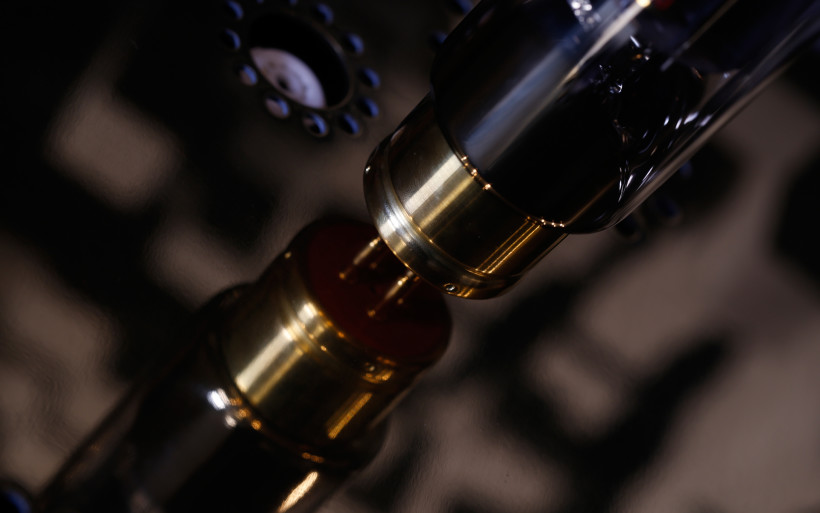 And lastly, the most important thing is that both 300B and T-100 sound very differently, yet at the same time are refined to a similar degree. When single aspects of their performance are taken into consideration, one can argue what’s better. But to my ears it’s undeniable that these two sit above the rest of glassy stock delivered to my doorstep, they play in a higher league and as such are simply better. The whole 300B vs T-100 case is all about chalk and cheese, nothing less and nothing more. After trying out both and comparing them for quite a while, I’m torn apart. At this point I can’t say which one should you roll with. Since my personal preference is of no importance and we’ve mapped everything already, it’s high time to summarize.
And lastly, the most important thing is that both 300B and T-100 sound very differently, yet at the same time are refined to a similar degree. When single aspects of their performance are taken into consideration, one can argue what’s better. But to my ears it’s undeniable that these two sit above the rest of glassy stock delivered to my doorstep, they play in a higher league and as such are simply better. The whole 300B vs T-100 case is all about chalk and cheese, nothing less and nothing more. After trying out both and comparing them for quite a while, I’m torn apart. At this point I can’t say which one should you roll with. Since my personal preference is of no importance and we’ve mapped everything already, it’s high time to summarize.
Summary
LampizatOr Pacific is a brilliant machine. With Psvane WE101D-L tubes at work, this Polish newcomer bested my reference Golden Gate by the same audio house rather easily. Even though said glass surely isn’t the best of the best for the former deck. There’s a room to maneuver still and the better tubes Pacific will be fed with, the more gracefully it’ll repay for such a service. After the glass task done, I strongly think that this product responds to DHTs more potently in comparison to the previous flagship by LampizatOr.
Rectifiers were a straightforward story, there’s no need to tell it once more. Each KR Audio 5U4G will do the job, whereas the DHT related case was far more complex, exciting and rewarding. KR Audio 4A3 got to the finish line as the last one, was bested by WE101D-L and this one lost with KR Audio PX4. To be perfectly honest, there are no bad choices here, each compliments Pacific very nicely, though the product by Psvane holds the best bang for your buck value and rightfully so. €475 for a pair of these? Yes, please. There’s a major catch, though. I’ve been told that WE101D-L won’t last as long as KR Audio goods. Neither will I confirm nor deny this. But after a bit less than two years of service, one WE101D-L out of six I own died already and another two are soon to be goners. Undoubtedly that’s something worth taking into serious consideration once glass shopping mode is on. All in all, my subjective finger points at KR Audio PX4 as the best one out of all three models mentioned in this paragraph.
KR Audio 300B and T-100 by the same manufacturer are a different breed of fighters. These are far above everything else I’ve tried during evaluation process described in this writing. It was at times surprising how much better Pacific sounded once any of the two models was in use. Again, I’m not able to firmly pick between ’em. Their different character aside, what stops me is quality on counts such as smoothness, pleasure, dynamics, imaging, refinement all across the board, grandness, downstairs reach or the ability to control it remarkably well. All this is present in both KR Audio cases. If someone would put a gun to my head with ask to stand by one model, all nervous I’d probably go with T-100, simply because it brings some of that Golden Gate magic back and paints sound sources a bit bigger than KR 300B. Yes, there’s no such thing as excessive grandness in this journo’s audio book. Still, this is a subjective choice and nothing else, both top tier KR Audio models are of equal quality to me and to have ’em both nearby sounds like a solid plan. Simple as that.
What Łukasz did is very smart. LampizatOr Pacific sold with a pair of KR Audio 300B as the standard option makes a perfect sense now. To me this is him saying out loud: “Here’s one of, if not the best DHT you can put in my latest DAC. It’ll show you what this machine is all about like no other valve out there”. After getting myself familiarized with KR Audio products and witnessing what the glorious 300B by this manufacturer does in Pacific exclusively, I can only agree with the man. ‘Till next time!
Associated equipment:
- Amplifiers: Trilogy 925
- Sources: Lampizator Pacific
- Speakers: Boenicke Audio W8
- Galvanic isolation: iFi Audio iGalvanic 3.0
- Transports: Asus UX305LA
- Speaker cables: Forza AudioWorks Noir Concept, Audiomica Laboratory Celes Excellence
- Interconnects: Forza AudioWorks Noir, Audiomica Laboratory Erys Excellence
- Power supply: Gigawatt PF-2 + Gigawatt LC-2 MK2 + Forza AudioWorks Noir Concept/Audiomica Laboratory Ness Excellence
- Rack: Franc Audio Accessories Wood Block Rack
- Music: NativeDSD
Retail prices of reviewed components in EU (excl. VAT):
- KR Audio 300B-RK*: €1004/pr
- KR Audio 4A3-RK*: €700/pr
- KR Audio 5U4G: €366
- KR Audio 5U4G-RK: €402
- KR Audio PX4-RK*: €1004/pr
- KR Audio T-100: €1144/pr
- Psvane WE101D-L: €475/pr
*RK – Riccardo Kron series valves, made for LampizatOr exclusively.
Supplier: BEST300B.com
































































